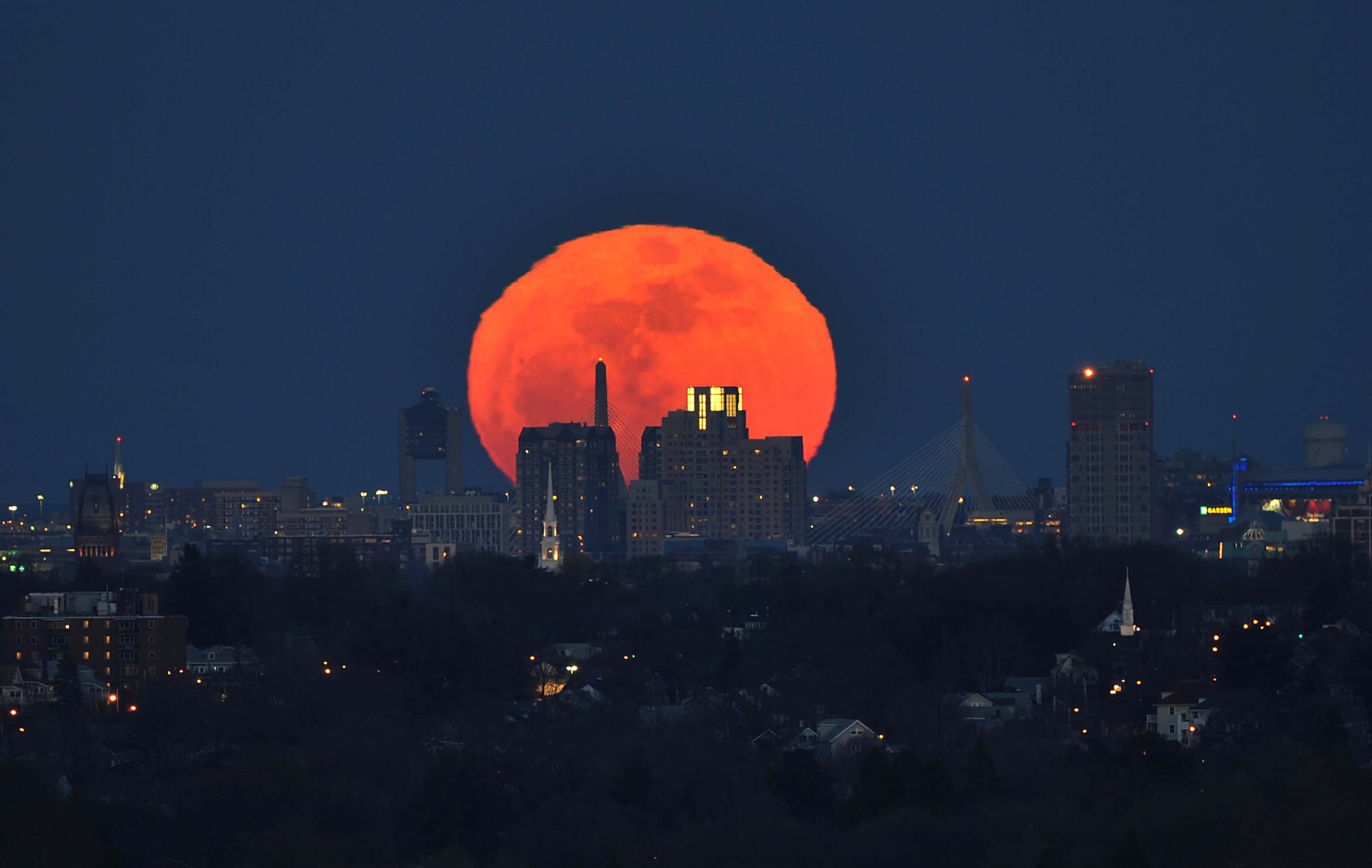I know what you’re thinking, “didn’t we just talk about this like a month ago.” We did and here is the proof. And we will talk about it again next month on the 13th. So if a “supermoon” is so common, why are we all talking about this one so much?!?
As I mentioned last month, and Bri mentioned yesterday, the moon’s orbit isn’t a perfect circle. There are times in it’s roughly 29.5 day orbit (relative to the sun) when it is slightly closer to Earth, called perigee, and times when it is slightly farther away, called apogee. (Note: relative to Earth, the moon’s orbit takes only 27.3 days, but since Earth is also moving, it takes a bit longer for the moon to get back to the same position relative to the sun.) On average, the moon is about 238,900 miles (384,400 km) away, but it’s about 5% closer to Earth at perigee and 5% farther away at apogee.


(graphics courtesy of NASA)
Technically, November 14th’s event is called a “perigean full Moon.” The term “supermoon” was created by self described “Certified Professional Astrologer” Richard Nolle in a 1979 article in Horoscope Magazine. By his definition, a “supermoon” is “a new or full moon which occurs with the Moon at or near (within 90% of) its closest approach to Earth.” Note that Nolle includes new moons in his definition. Since new moons are not easily observable, you’ll rarely hear them mentioned.
By that definition, a “supermoon” is not all that uncommon. The last three full moons of 2016 are all “super.” But November’s full moon is the most “super” because it coincides with a particularly close approach. At 6:23 AM Monday morning the centers of the Moon and Earth will be only 221,524 miles (356,509 km) apart. Surface to surface, the distance will be a mere 216,486 miles (348,401 km). I have more miles than that on my Toyota! This is made possible by several factors and slight variations in the Moon’s orbit that combine to bring it nearly as close as it can come – within 85 miles of the closest possible approach! It’s also the closest the moon has been to Earth since 1948 and the closest it will be to Earth until 2034.
The Moon reaches peak fullness at 8:52 AM Monday morning. “But Rob, that’s daylight?!?” I know. Don’t get too hung up on when the full moon technically occurs. The “super”-ness of the full moon will be on display both Sunday night and Monday night. Since we are expecting clouds to move in Monday night, you will likely get a better view Sunday night. Moonrise, in the evening, is the best time to view due to an illusion which makes it appear even larger to our brains when it is just above the horizon. So Sunday evening is my recommendation for the best view. However, “supermoons,” particularly this one, are about 30% brighter and that should make for another pretty sight in the Monday morning sky opposite of the rising sun at 6:34 AM.

(On March 19, 2014, the full Moon, almost exactly at perigee, hugs the skyline of Boston, Massachusetts. The disk appears distorted by atmospheric refraction, and its red hue results because the atmosphere has selectively scattered away blue light. From Sky and Telescope and Dennis di Cicco.)
How about the weather?!? “Sunny and mild” pretty much sums up Sunday and Monday. A storm moves up the coast from Georgia and reaches us on Tuesday. The good news…much needed rain! We might get up to 1″ of rain with this system. The bad news…strong onshore winds from the storm combined with unusually high tides from the “supermoon” could lead to some minor coastal flooding or beach erosion.
After that we return to sunny and mild for the rest of the week. The average high temp for this time of year would be about 52°. We will be above that almost all week!
Many thanks to Kelly Beatty, Senior Editor at Sky and Telescope, and Tony Rice, NASA Solar System Ambassador, for the info and graphics in this blog. All astronomy lovers will enjoy following Tony Rice on twitter.
